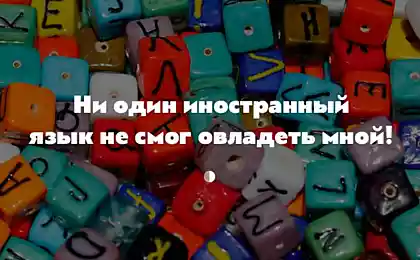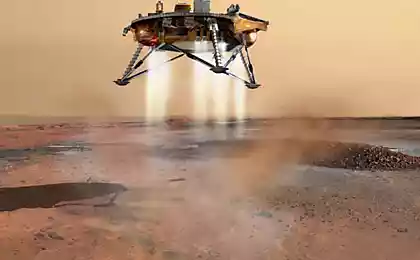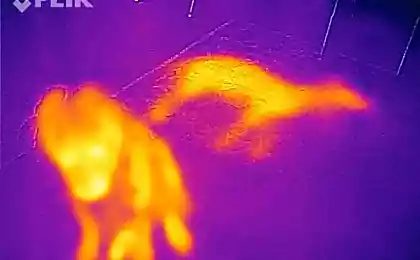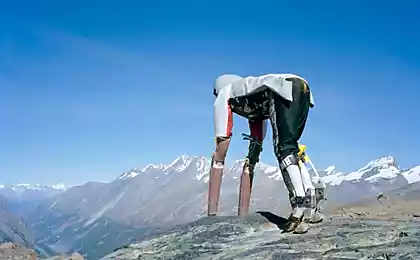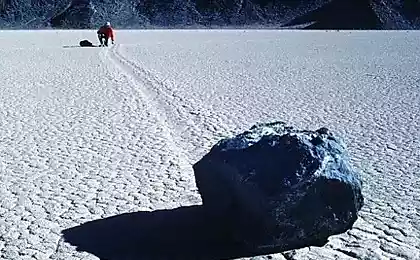138
In the respected scientific journal PLOS ONE published the solution to the mystery of moving stones from Death Valley
The mystery of the moving stones from Death Valley has stirred people’s minds for decades. In this dried desert, there are dozens of stones that leave traces in the dust – as if some unknown force is driving them forward. Scientists have finally been able to detect the movement of the stones, and now an explanation has been found: thin ice and weak wind.
The study, published in the journal PLOS ONE, describes the first real case of scientists observing the movement of stones. The experiment was launched four years ago when a team of researchers installed cameras and used GPS to track the movement of rocks on the dried-up Racetrack Playa lake. At the time, they had no confidence that the cameras and sensors would actually detect anything.
And then in December 2013, a perfect storm of ice and wind caused hundreds of rocks to move along the bottom of Racetrack Playa. Scientists tracked the formation of an extremely thin crust of ice at the bottom of a dried-up lake – and a light but constant wind then began to knock the ice caps together. They accumulated behind the stones and began to push them forward. As a result, the stones moved up to 70 meters and moved at a speed of 16 kilometers per hour. For the first time in history, it was caught on camera.
But scientists say this may not be the end of the story. The largest cobblestones did not move during this storm, which suggests that there must be another explanation for their movement. There is still a mystery in Racetrack Playa.
Source:gearmix.ru
Source: /users/1080
The study, published in the journal PLOS ONE, describes the first real case of scientists observing the movement of stones. The experiment was launched four years ago when a team of researchers installed cameras and used GPS to track the movement of rocks on the dried-up Racetrack Playa lake. At the time, they had no confidence that the cameras and sensors would actually detect anything.
And then in December 2013, a perfect storm of ice and wind caused hundreds of rocks to move along the bottom of Racetrack Playa. Scientists tracked the formation of an extremely thin crust of ice at the bottom of a dried-up lake – and a light but constant wind then began to knock the ice caps together. They accumulated behind the stones and began to push them forward. As a result, the stones moved up to 70 meters and moved at a speed of 16 kilometers per hour. For the first time in history, it was caught on camera.
But scientists say this may not be the end of the story. The largest cobblestones did not move during this storm, which suggests that there must be another explanation for their movement. There is still a mystery in Racetrack Playa.
Source:gearmix.ru
Source: /users/1080


